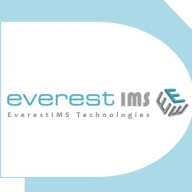

Spiceworks and Infraon IMS compete in the IT management software category, catering to businesses of varying sizes. Infraon IMS appears to have the upper hand with its advanced monitoring capabilities and robust customization options, appealing to larger enterprises with complex needs.
Features: Spiceworks provides a free solution with help desk functionality, efficient inventory management, and a supportive community. Infraon IMS offers customizable role-based dashboards, real-time network monitoring, and detailed reporting features, supporting hybrid environments with workflow automation.
Room for Improvement: Spiceworks needs more advanced monitoring tools, enhanced ticketing and reporting capabilities, and improved network inventory accuracy. Infraon IMS could benefit from a more user-friendly GUI, AI integration for predictive analytics, and better SaaS compatibility along with comprehensive graphical network mapping.
Ease of Deployment and Customer Service: Spiceworks can be deployed both on-premises and in the cloud, relying mainly on its user community for support, which suits SMBs. Infraon IMS offers hybrid deployment options with strong technical support available through its paid structure, making it ideal for larger setups requiring detailed professional assistance.
Pricing and ROI: Spiceworks is offered for free, making it attractive to SMBs looking for cost-effective solutions with significant efficiency improvements. In contrast, Infraon IMS, though not free, has competitive pricing models and customizability, providing high ROI for enterprises needing extensive network management features.
| Product | Market Share (%) |
|---|---|
| Spiceworks | 0.4% |
| Infraon IMS | 0.4% |
| Other | 99.2% |


| Company Size | Count |
|---|---|
| Small Business | 3 |
| Midsize Enterprise | 2 |
| Large Enterprise | 3 |
| Company Size | Count |
|---|---|
| Small Business | 24 |
| Midsize Enterprise | 14 |
| Large Enterprise | 10 |
Infraon IMS offers network monitoring with real-time dashboards, customizable GUIs, and integrated tools, supporting device management and workflow automation efficiently.
Infraon IMS delivers stable performance with features tailored for easy customization and detailed network management. Users benefit from real-time monitoring through role-based dashboards and integrated ticketing tools. However, improvements in reporting, GUI usability, and AI integration are needed. Challenges include monitoring non-IPBS devices and improving connectivity visibility. Users require seamless Infraon Desk integration, ease of device addition, and enhanced topology views.
What are the key features of Infraon IMS?In industries like IT infrastructure and data center management, Infraon IMS is utilized for network monitoring and managing key components such as leased lines and firewalls. Its capabilities aid diverse geographical locations in overseeing data centers, offering centralized monitoring and access to critical infrastructure.
We monitor all IT Infrastructure Monitoring reviews to prevent fraudulent reviews and keep review quality high. We do not post reviews by company employees or direct competitors. We validate each review for authenticity via cross-reference with LinkedIn, and personal follow-up with the reviewer when necessary.